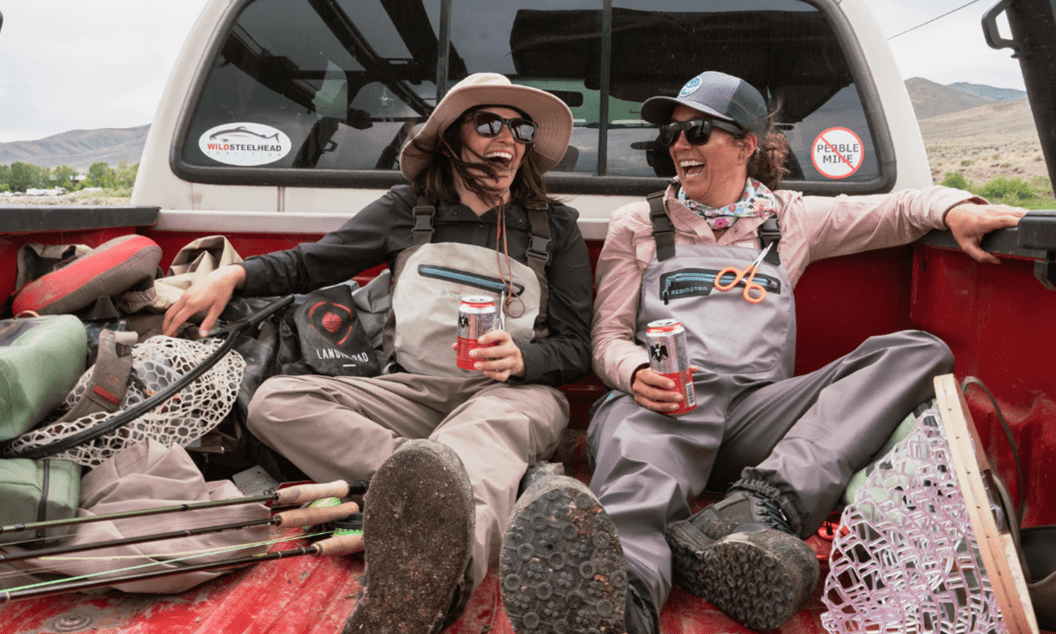For many fly fishers, waders and wading boots can be a source of confusion and concern. Should I get "bigfoot waders" or stockingfoot waders and wading boots? What size should the waders and wading boots be? What materials? What features are worth paying for? What happens if the waders leak immediately? Should I just wet-wade and forget about waders entirely?
In fact, a good pair of waders and wading boots can be an angler's best friend. They'll help you stay in the water all day and keep your footing when weather gets cold and wading gets dangerous. Buying the right pair is an important moment.
In more than 15 years fishing and working around the world in the fishing industry, I've worn through my fair share of waders and boots. Before quality women's fly fishing gear was available, I fished in men's waders and boots. Nowadays, I know what features I need for my own preferences and for the respective challenges of each fishery.
Buying Waders
Let's start here: The best way to find waders and wading boots that fit your body and your fishing needs—and provide the features you need—is to head into your local fly-fishing shop and talk with the experts working there. The local experts can help you determine which waders and boots are best for your own use case and preferences.
But some basic online research first never hurts. I'm always on the lookout for new technologies that will make my time on the water more comfortable, safer, and more enjoyable. Here are a few things I look for when shopping for waders and wading boots.
How Do Waders and Wading Boots Work?
There are certainly all-in-one options on the market, but the vast majority of fly fishers use a combination of stockingfoot chest waders and wading boots. (Fishing waders that include a boot are often called "bigfoot waders"; and though they can work in a pinch, we don't recommend any bigfoot waders on this year's list. It's time to upgrade to the stockingfoot wader-wading boot combo.) Stockingfoot chest waders are waterproof and feature booties that slip into the wading boots, which are designed to fit over the waders, usually with a "gravel guard" feature to keep rocks and debris from getting stuck underfoot. It's important that both waders and boots have the features and fit that you need.
Wader Features 101
One of the first questions anglers should ask themselves when shopping for new wading boots is felt versus rubber soles. Felt has the advantage of offering more grip on slick, algae-covered rocks, but can harbor invasive species (be sure to let them dry out thoroughly in between fishing trips, especially when you're changing waterways!) and tend to accumulate mud and snow. Rubber is more durable and a bit more versatile, but offers less grip in slick conditions.
Another factor to consider when shopping for wading boots is weight and support. Boots that are "burlier"—offering more padding, more reinforcement, and heavier materials—can offer more support but often come in heavier than lighter-weight, hiking-style boots. If you don't find yourself hiking long riverside miles often and prefer the support of a heavier boot, they can be a great choice. However, if you prefer long hikes into remote rivers and lakes or simply like having less weight on your feet, look at some of the new, lighter-weight performance wading boot models.
Wading belts are extremely important for safety. Imagine yourself trapped in a rapidly-filling balloon of water, sinking and getting heavier as you drift downstream toward deeper water and rapids... and you understand why wading belts save lives. All the waders we recommend here come with a wading belt. Make sure you wear yours, so you can fish for many years to come.
The Best Fly Fishing Waders for Men
Here are a few newer designs which have caught my eye this year:
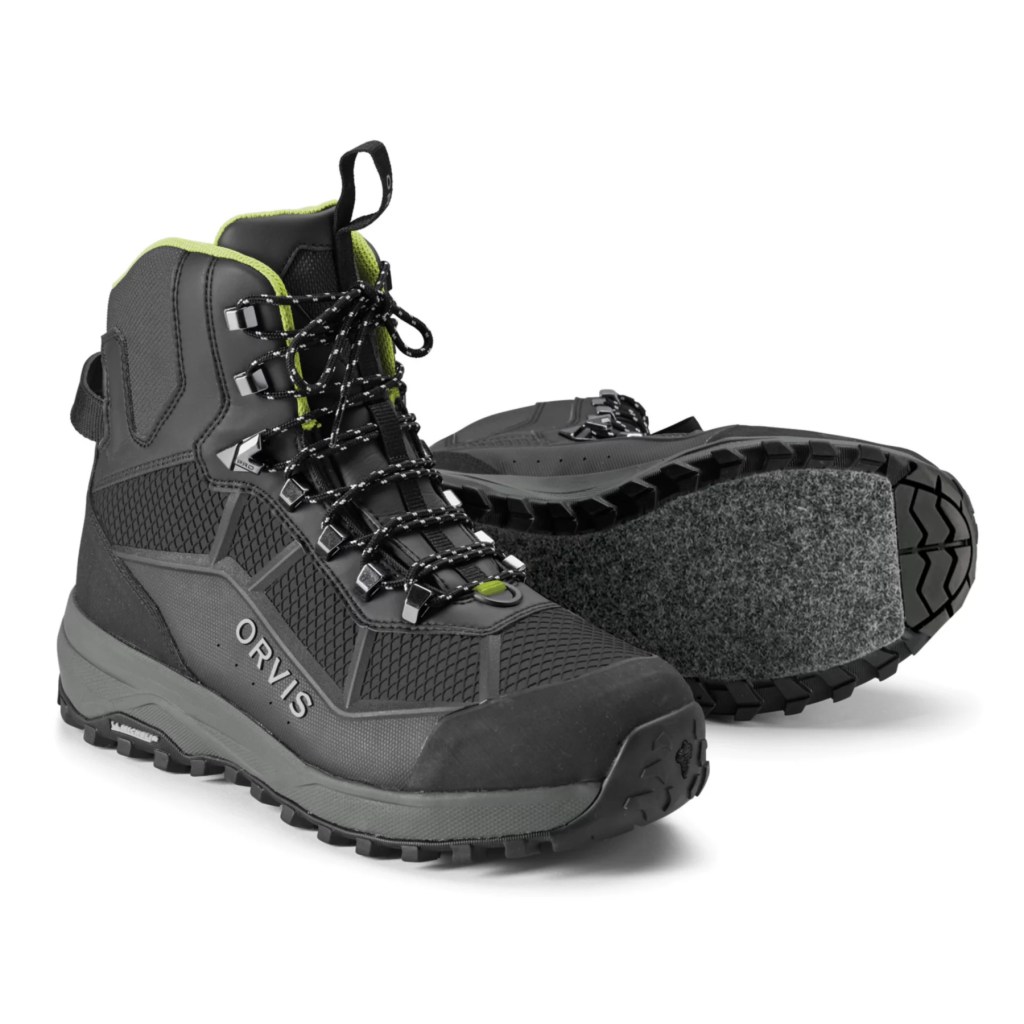
Orvis
Orvis has combined felt and rubber soles in this boot, offering the best of both worlds. The outer edge of the sole has a Michelin® rubber material, helping increase durability, while the main sole underfoot is felt for grip on slick rocks. The boot is built on Orvis's PRO Wading Boot design, which is burly, well-constructed, and a bit heavy at times, but has performed well for anglers putting many miles on their boots. (I've run a pair of the original PRO Wading Boots for three years now and been overall quite pleased.) The boot offers good ankle protection, and the toe has no stitching, eliminating which is often a key wear point on wading boots. A big pull tab on the back of the boot makes on / off easy, even with frozen fingers. Available in sizes 7-14.
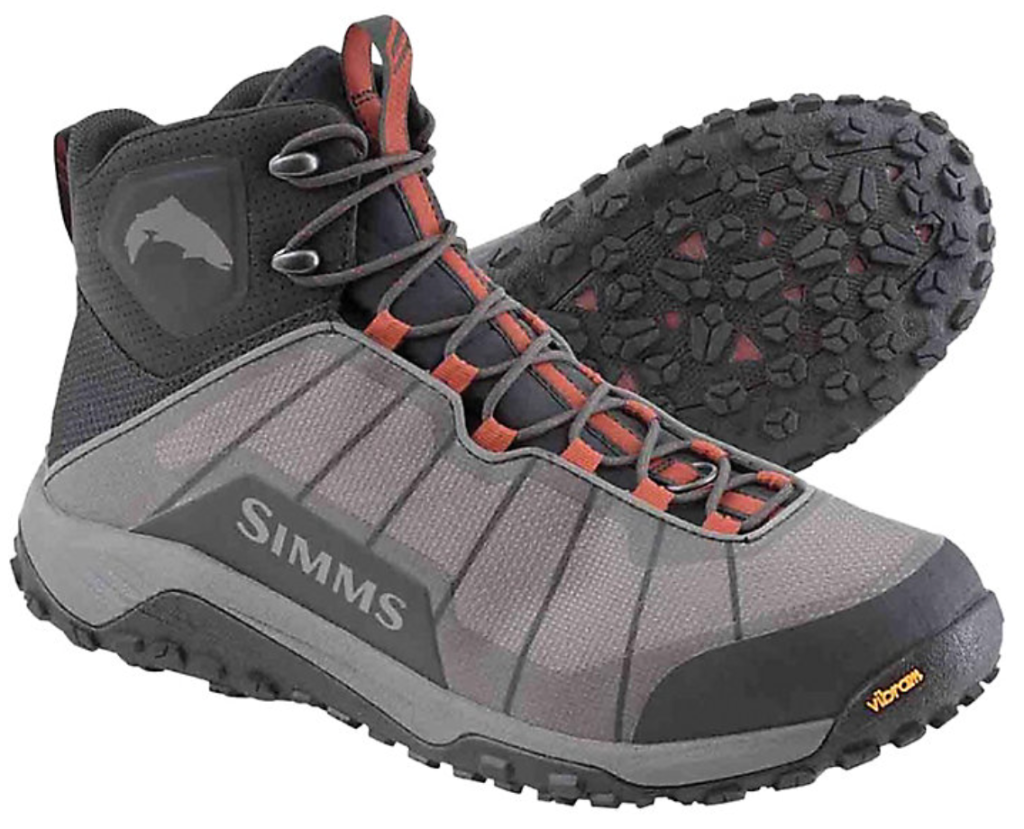
Simms
Simms has long been a mainstay in the wader and wading boot world, creating designs with specific types of angling in mind. The Flyweight Boot, available in both felt and rubber iterations, was made with active fishermen in mind; the people who log long miles every time they go fishing. That angler wants a comfortable boot that feels more like a hiking shoe than a bulky wading boot. The lightweight design still offers plenty of protection (I just wore them through a long week fishing for dorado in the Bolivian Amazon and they were incredibly comfy) without sacrificing support or protection. The low profile doesn't slow you down, and the midsole is well-cushioned for long days hiking into epic water. Available in sizes 7-14.

Orvis
Zippered waders have changed the game for men looking for ease and convenience on the river. Orvis isn't the first brand to feature a front zipper in their waders, but the combination of the brand's PRO Wader and the waterproof zipper is a good one. The zipper offers easy on/off for bathroom breaks, while remaining waterproof during deep wading. Other features we liked are split fleece-lined handwarmer pockets, super-durable 100% Cordura® fabric (four layers in the upper and five in the lower makes for a burly wader) and a daisy chain at the chest for clipping forceps and other tools. Available in a broad range of 14 sizes from S-XXL, including short and long lengths.
Best Fly Fishing Waders for Women
Women's wading gear has long trailed behind men's gear. Many of us who have been fishing for a few decades recall starting off wearing men's waders, boots, and clothing simply because there were limited or no women's options available. The market has come a long way, and now female anglers can enjoy a variety of waders, boots, and more clothing designed for our unique needs and tastes.
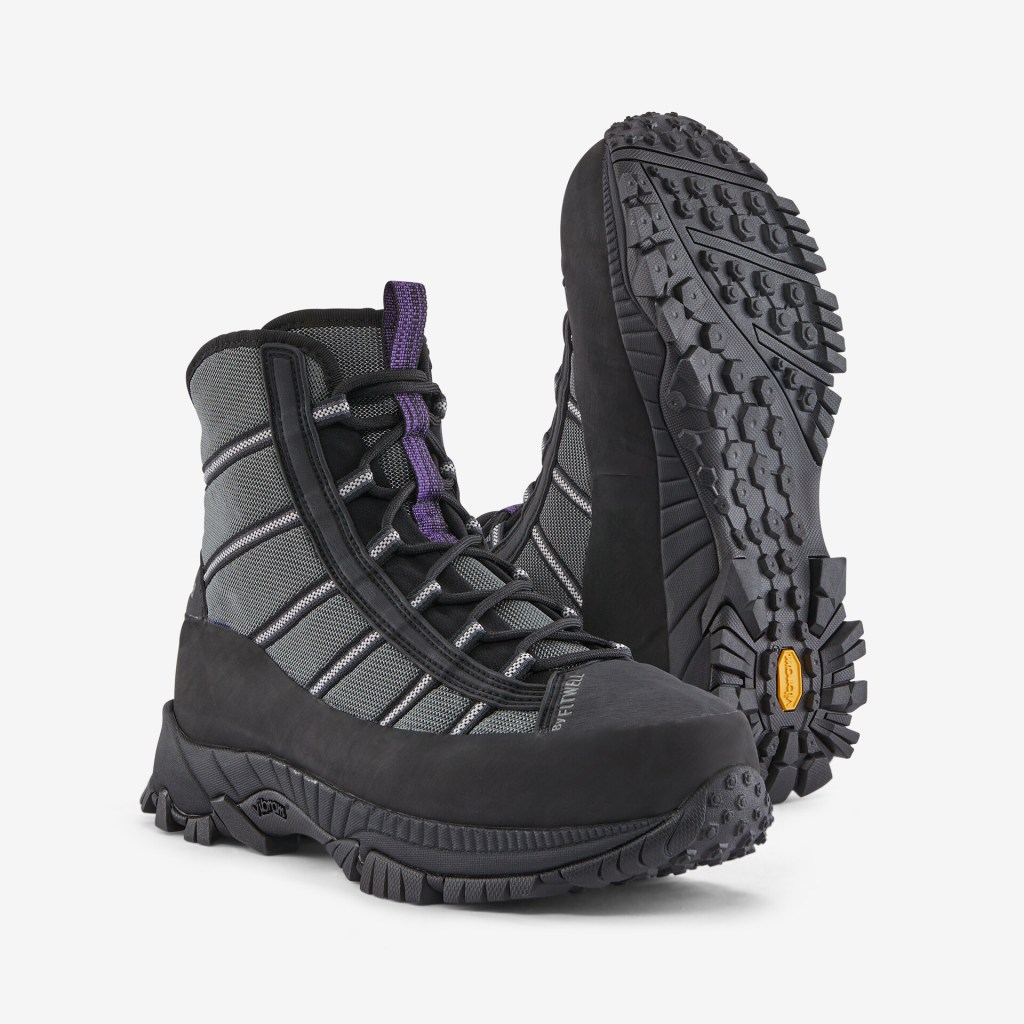
Patagonia
A good option for both women and men, Patagonia's new Forra Wading Boot is lightweight and fits more like a hiking boot. The slim-line design makes it a great fit for women with more narrow feet, and the lightweight won't lug anglers down during active days on the water. The delicate use of purple gives the boots a feminine touch without going overboard, and refreshing change from other brands which "shrink it and pink it" in an attempt to appeal to women. The boots use Vibram rubber role technology for good traction and offer a high ankle for extra support when rock-hopping. Available in sizes 5-14.
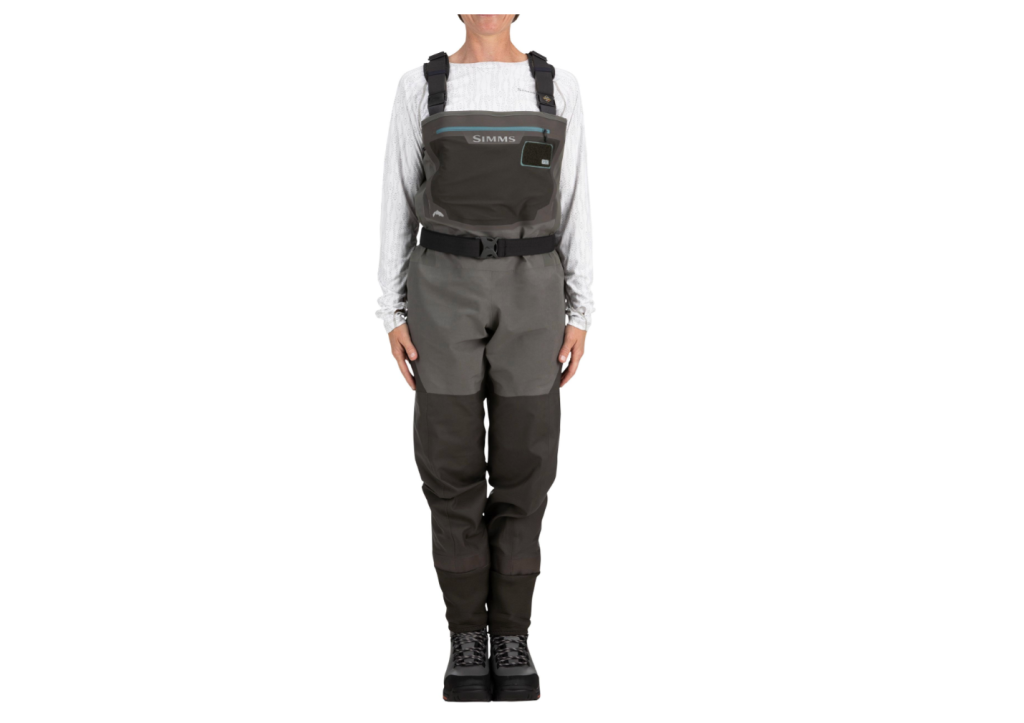
Simmons
It would be impossible to talk women's waders without touching on the Simms G3. The old version of the G3 was a veritable workhorse (I have a pair that's 11 years old and still going strong in my rotation), but the new, updated version from Simms brings several welcome new changes. The fit has been improved, offering a better fit for a variety of shapes. The upper is made of three layers of GORE-TEX® PRO fabric, and the lower is four layers for extra durability. Made in the USA, the waders have a wildly comfortable suspecter system, well-planned storage pockets, and a microfleece-lined, zippered handwarmer pocket. Available in regular, short, and tall lengths in sizes S-2XL.
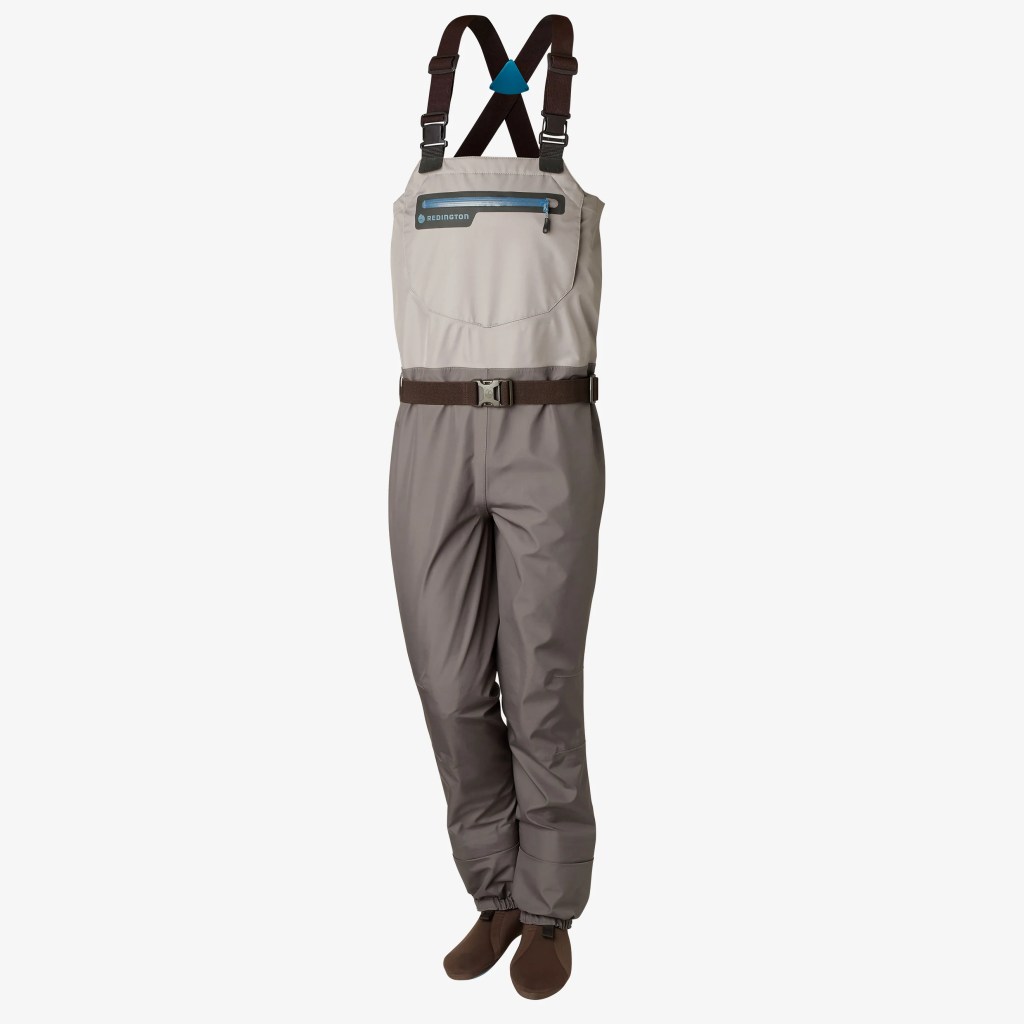
Remington
Redington has been hit-or-miss with women's waders in the past, but the brand hit the mark with the Escape Waders. Comfortable and lightweight, the waders feature four layers of durable material in the lower and three in the upper. The fit adapts to various frames remarkably well, and while the waders lack many of the features of higher-end models, they still bring the basics, including a zippered chest pocket and a flip-out storage pocket.
How to Properly Store and Travel with Waders and Wading Boots
It's hard to talk about waders and boots without talking about how to store and travel with them. Consistently, the bag I see being used most around the world by seasoned anglers is the Patagonia Black Hole Wheeled Duffel Bag 100L($419). When combined with all the other fishing gear anglers bring on the road, waders and boots get heavy, and there's nothing like hauling a 55-lb. duffel between airport terminals to make you question all your life's decisions. (Trust me, I did it very recently.) This roller from Patagonia hauls 100 liters of gear and features a telescoping handle, frame system, and internal organization that's lighter than others on the market, ideal for not taking up too much luggage allowance. The bag is highly weather-resistant, and will be getting a material update in 2024 to new, higher-tech, and more environmentally-conscious fabrics.
FAQ
Waders offer a waterproof barrier against cool or cold water while wade fishing. Waders have neoprene booties which are designed to fit inside wading boots, which offer increased traction and protection when wading rocky river and lake bottoms.
It depends on where you're fishing and your own personal preference. Felt offers increased traction on slippery rocks, but can collect mud and snow, and can harbor aquatic invasive species. Rubber is more durable but can be a bit slicker in challenging conditions.
Decades ago, neoprene waders were the way to go. But neoprene is hot, sweaty, and holds onto smells quite badly. With newer waterproof / breathable materials on the market, most fly anglers choose to go with breathable waders. Neoprene technology has advanced and is still a popular choice for waterfowl hunters and some fishermen fishing very cold conditions.
Typically, fishermen will take one size larger than their street shoe size in wading boots, as the boots must fit over both a normal sock and the bulky neoprene sock attached to the waders. If you're concerned about sizing, head into your local outdoor or fly shop and try on a selection of waders and boots—that's the best way to ensure you have the right fit.
Like any outdoor gear, it's a good idea to break in your waders and boots before you head off on a big trip. Putting a few shorter fishing sessions on your new wading gear will help ensure the waders and boots can start to mold to your body and feet. The material will begin to soften up slightly and just feel more "yours" which is a good thing, because once you're on the water you want to be focused on the fishing, not on your clothing.
READ MORE: The Best Fishing Rods of 2023
